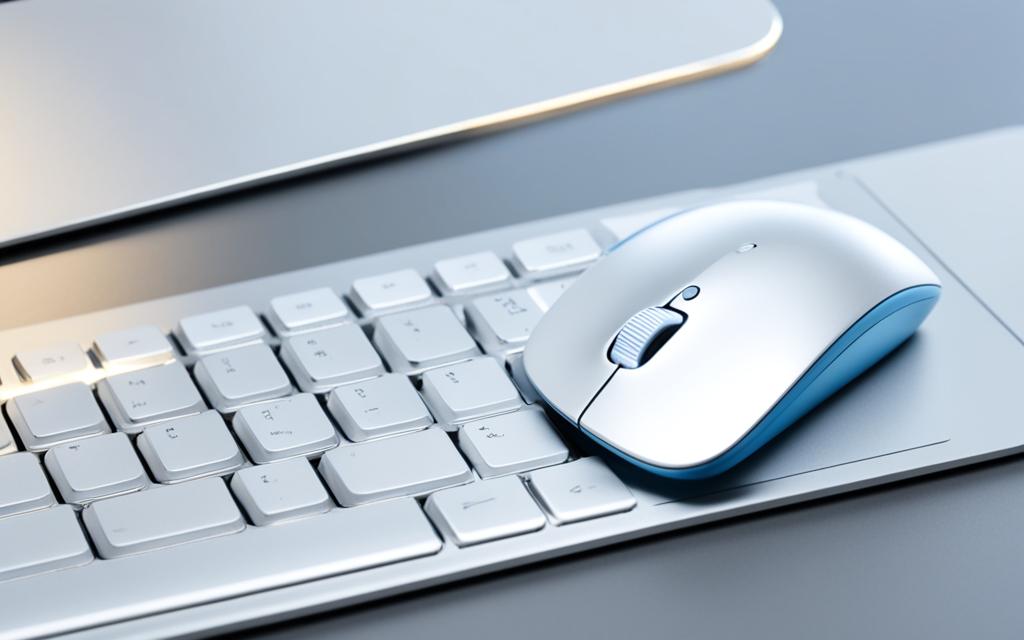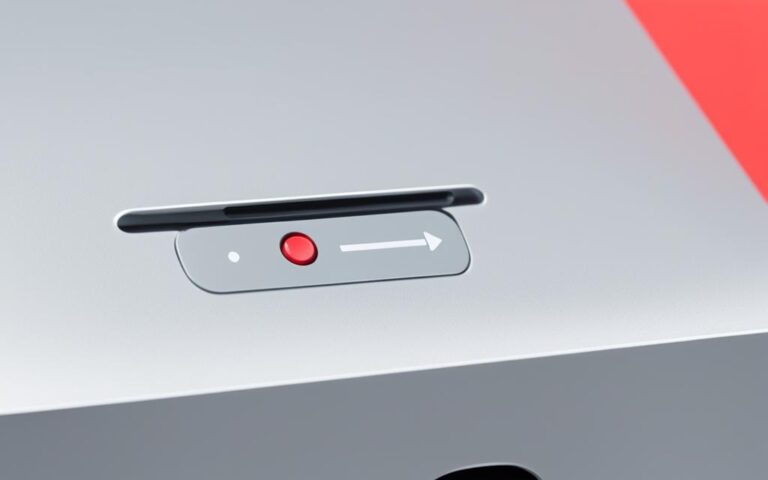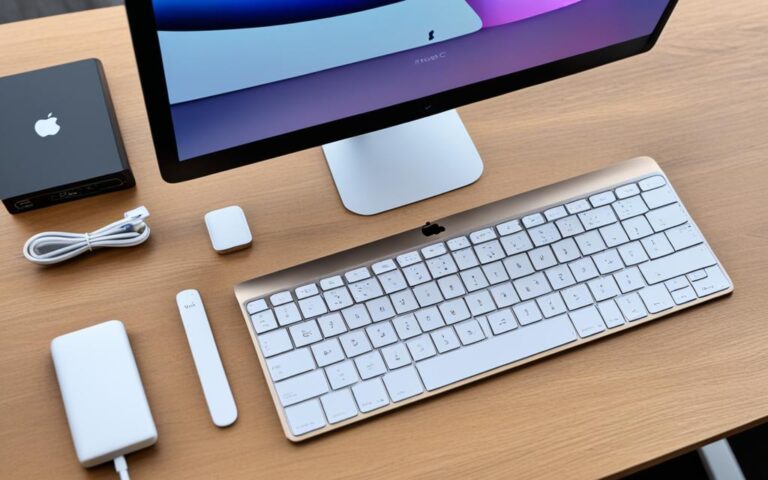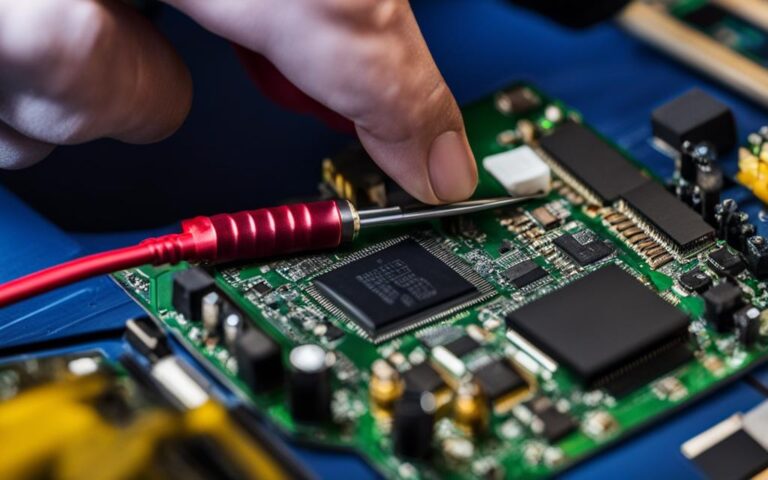iMac Keyboard and Mouse Connectivity Troubleshooting
If you’re experiencing connectivity issues with your iMac keyboard or mouse, you’re not alone. Troubleshooting these problems can be frustrating, but with a few simple steps, you can often resolve the issues and get back to work.
First, let’s start with the iMac keyboard. If your keyboard is not connecting to your iMac, there are a few things you can check. Make sure the power switch on your keyboard is turned on. If it’s a wireless keyboard, check the batteries to ensure they are not depleted. Additionally, make sure Bluetooth is enabled on your iMac by going to System Preferences > Bluetooth and ensuring the box next to “Bluetooth” is checked.
Now, let’s move on to the iMac mouse. If your mouse is not working properly, try these troubleshooting steps. Check the batteries in your mouse to make sure they are not dead. If you have a wireless mouse, make sure the power switch is turned on. Again, check that Bluetooth is enabled on your iMac.
These are just a few basic troubleshooting steps you can take to resolve connectivity issues with your iMac keyboard and mouse. If the problem persists, there may be more complex issues at play. In that case, it’s recommended to seek professional help from an Apple Store or authorized service provider.
Stay tuned for the next sections where we will provide more detailed troubleshooting tips for specific keyboard and mouse issues.
How to Troubleshoot Magic Mouse Connectivity Issues
If you are experiencing connectivity issues specifically with your Magic Mouse, there are a few additional steps you can take. First, make sure the power switch on the bottom of the device is in the on position. If the connection is still not working, try connecting the mouse to your Mac using a Lightning to USB cable or USB-C to Lightning cable. This will pair the accessory with your Mac and charge the built-in battery. You can also check the accessory’s charge level by clicking on the Control Centre icon in the menu bar and selecting Bluetooth.
If these steps don’t resolve the problem, you can try some other troubleshooting methods:
- Reset the Bluetooth module on your Mac by going to System Preferences, selecting Bluetooth, and clicking on the “Remove” (-) button next to the Magic Mouse. Then, turn off Bluetooth, restart your Mac, and turn Bluetooth back on. Reconnect the Magic Mouse to check if the issue is resolved.
- Try using the Magic Mouse on a different surface or mouse pad. Sometimes, the surface the mouse is used on can interfere with its tracking or connectivity.
- Check for any software updates for your Mac and install them if available. Outdated software can sometimes cause compatibility issues with devices like the Magic Mouse.
If none of these troubleshooting steps work, it’s recommended to reach out to Apple Support for further assistance or visit an Apple Store for hands-on help with your Magic Mouse connectivity issues.
Keeping your Magic Mouse connected and functioning properly is essential for a smooth workflow on your iMac. By following these troubleshooting tips, you can resolve connectivity issues and ensure seamless navigation with your Magic Mouse.
Troubleshooting Tips for Magic Keyboard Connectivity Issues
If you are having trouble connecting your Magic Keyboard to your iMac, here are some troubleshooting steps you can follow to resolve the connectivity issues.
1. Check the power switch: Ensure that the power switch on the back edge of the Magic Keyboard is turned on. It’s a small switch that controls the device’s power.
2. Connect via cable: If the wireless connection is not established, you can try connecting the Magic Keyboard to your Mac using a Lightning to USB cable or USB-C to Lightning cable. Plug one end of the cable into the keyboard’s charging port and the other end into your Mac’s USB port.
3. Wait and disconnect: After connecting the cable, wait for about a minute to allow the keyboard to pair with your Mac and charge its built-in battery. Once the connection is established, disconnect the cable from both the keyboard and your Mac.
4. Check battery charge level: To check the charge level of your Magic Keyboard, you can click on the Control Centre icon in the menu bar and select Bluetooth. From there, you can see the battery level of your connected devices, including the keyboard.
If you have followed these troubleshooting tips and are still experiencing connectivity issues with your Magic Keyboard, it may be helpful to seek professional assistance from an authorized service provider or visit your nearest Apple Store for further support.
Remember, resolving connectivity issues with your Magic Keyboard is important for a seamless and productive user experience. By following these troubleshooting tips, you can ensure a reliable connection between your Magic Keyboard and iMac.
Troubleshooting Tips for Wireless Keyboard Connectivity Issues
When it comes to troubleshooting wireless keyboard connectivity issues with your iMac, there are a few essential steps you need to follow. By following these troubleshooting tips, you can quickly resolve the connectivity problems and get your wireless keyboard working again seamlessly.
1. Check Bluetooth Settings
Start by ensuring that Bluetooth is enabled and functioning correctly on your Mac. Go to the System Preferences and navigate to the Bluetooth settings. Make sure that Bluetooth is turned on and that your device is discoverable.
2. Verify Power Switch
Check the power switch on your wireless keyboard and ensure that it is turned on. Sometimes, the switch can accidentally be toggled off, leading to connectivity issues. Ensure that the power switch is in the correct position for the device to function properly.
3. Check Battery Level
If your wireless keyboard is experiencing connectivity problems, low battery levels could be the culprit. Check the battery level of your keyboard and replace or charge the batteries if necessary. This simple step can often restore the connection between your keyboard and iMac.
4. Disable Mouse Keys and Slow Keys
Another potential cause of connectivity issues is the accessibility settings on your Mac. Make sure that Mouse Keys and Slow Keys are turned off, as these settings can interfere with the normal operation of the keyboard. Adjust these settings in the Accessibility section of your Mac’s System Preferences.
By following these troubleshooting tips, you can resolve common wireless keyboard connectivity issues with your iMac. If the problem persists after trying these steps, it may be necessary to seek professional assistance from an Apple Store or authorized service provider.
| Troubleshooting Tips for Wireless Keyboard Connectivity Issues |
|---|
| Check Bluetooth Settings |
| Verify Power Switch |
| Check Battery Level |
| Disable Mouse Keys and Slow Keys |
Troubleshooting Tips for USB Keyboard Connectivity Issues
If you are experiencing connectivity issues with a USB keyboard, there are a few steps you can take to troubleshoot the problem:
- Try a different USB port on your iMac. Sometimes, certain ports may have issues or conflicts that can affect the connectivity of your USB keyboard.
- Check the System Report to see if your computer detects the keyboard. This can help determine if the issue lies with the keyboard or the computer itself.
- Ensure that Bluetooth is turned off in the System Settings. Sometimes, a Bluetooth keyboard can cause conflicts with a USB keyboard, leading to connectivity problems.
- Check the accessibility settings on your Mac and make sure that Mouse Keys and Slow Keys are turned off. These settings can also affect wired keyboards and may interfere with their normal operation.
- If none of the above steps resolve the issue, try connecting your USB keyboard through an extension cord or a USB hub. Sometimes, using these additional devices can help resolve connectivity issues by providing a more stable connection.
If you are still facing connectivity issues after trying these troubleshooting tips, it is recommended to seek professional help or contact the manufacturer for further assistance.
Keeping Your Keyboard Clean
Proper keyboard maintenance is essential to ensure its optimal functioning and prevent any interference. Regularly cleaning your keyboard is a simple yet effective way to maintain its performance and longevity. Here are some steps you can take to keep your keyboard clean:
- Wipe the keys regularly: Use a soft cloth or microfiber cloth to gently wipe the keys. This will remove any fingerprints, smudges, or surface dirt that may accumulate over time.
- Remove dust and debris: Utilize compressed air to blow away any dust or debris that may have settled between the keys. Be sure to hold the canister upright and maintain a suitable distance to prevent any liquid from being released onto the keyboard.
- Avoid eating or drinking near your keyboard: Accidental spills can cause significant damage to your keyboard. Therefore, it’s best to keep food and beverages away from your workspace to minimize the risk of liquid spills or crumbs finding their way into the keys.
If, after following these cleaning steps, your keyboard still does not function properly, it may be necessary to seek further assistance. Consider visiting a local Apple Store or consulting online resources for troubleshooting guidance specific to your keyboard model.
Now that you know how to keep your keyboard clean, let’s move on to the next section, where we’ll discuss when it’s appropriate to seek professional help for keyboard issues.
Note: Image depicting a clean keyboard for illustrative purposes only.
When to Seek Professional Help
If you have tried all the troubleshooting steps mentioned above and your keyboard or mouse still does not work properly, it may be time to seek professional assistance. Contact your nearest Apple Store or authorized service provider for hardware repair. Additionally, you can search online for specific issues or join discussion forums to find solutions from other users who may have experienced similar problems.
If you’ve exhausted all the DIY options and are still facing connectivity issues, it’s best to turn to the experts. At the Apple Store, you can expect professional assistance from trained technicians who have the expertise to diagnose and fix the problem. They have access to the necessary tools and resources to accurately identify and resolve hardware-related issues.
Whether it’s a faulty keyboard or malfunctioning mouse, the Apple Store is equipped to handle hardware repairs for a wide range of Apple products. Their technicians can perform diagnostics, replace parts, and ensure that your devices are up and running smoothly again. Rest assured, by seeking professional help, you’ll have peace of mind knowing that your iMac accessories are in capable hands.
Remember, trying to repair or replace hardware components on your own can void your warranty or cause further damage to your devices. So, it’s always advisable to reach out to the professionals who have the knowledge and expertise to handle the job.
If visiting an Apple Store or authorized service provider isn’t feasible, you can explore online resources for guidance and solutions. Apple’s support website provides comprehensive troubleshooting guides and FAQs that can help you identify and resolve common issues. Additionally, there are numerous online communities and forums where Apple users share their experiences and offer helpful advice.
Seeking professional assistance not only ensures the proper resolution of your connectivity issues but also saves you time and effort. Trust the experts at the Apple Store to provide the necessary hardware repair services and get your iMac keyboard and mouse back in working order.
Let’s take a moment to recap the troubleshooting steps and the right time to seek professional help:
- First, try the troubleshooting steps mentioned earlier in this article.
- If the issue persists, reach out to your nearest Apple Store or authorized service provider for professional assistance.
- Online resources such as Apple’s support website and discussion forums can offer additional guidance and solutions.
Remember, it’s always better to seek professional help when you’ve exhausted all other options. Don’t hesitate to reach out to the experts for hardware repair and ensure optimal performance for your iMac keyboard and mouse.
Comparison of Troubleshooting Methods
| Troubleshooting Method | Pros | Cons |
|---|---|---|
| DIY Troubleshooting | – Convenient and cost-effective – Can be done at home – Learn more about your devices |
– Limited expertise – May not resolve all issues – Potential for further damage or voiding warranty |
| Professional Assistance | – Expertise and knowledge – Access to specialized tools and resources – Warranty protection |
– Additional cost – Need to visit Apple Store or authorized service provider |
Conclusion
Troubleshooting connectivity issues with your iMac keyboard and mouse can be frustrating, but by following the steps outlined above, you can often resolve the problems. Remember to check the power switch, ensure Bluetooth is enabled, and check the battery levels for wireless accessories. Additionally, check the accessibility settings and try different USB ports for wired keyboards. Keeping your keyboard clean is also important for optimal performance.
If all else fails, don’t hesitate to seek professional help from an Apple Store or authorized service provider. By addressing connectivity issues promptly, you can ensure a seamless experience with your iMac keyboard and mouse.











